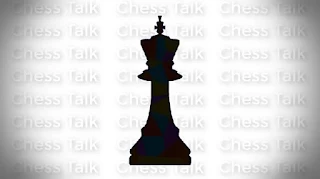When it comes to the intricate world of chess, the allure of chess opening TRICKS is undeniable. Seasoned players know that mastering the right openings can make or break a game. Among the myriad of chess openings, the Tennison Gambit stands out as a cunning choice for those who seek to seize the initiative and baffle their opponents. In this comprehensive exploration, we will unravel the secrets, traps, moves, strategy, and ideas behind the Tennison Gambit, equipping you with the knowledge to outwit your adversaries and claim victory on the chessboard.
The Origins of the Tennison Gambit
The Tennison Gambit derives its name from the American chess master James Mason Tennison, who was renowned for his inventive and daring style of play. It emerges from the broader framework of the Queen's Gambit Declined, showcasing its penchant for tactical complexities and sharp play.
The opening sequence for the Tennison Gambit typically unfolds as follows:
- d4 d5
- c4 e6
- Nc3 Nf6
- Bg5 Be7
- e3 O-O
- Nf3 h6
In this initial setup, White makes a bold decision to sacrifice a pawn in exchange for rapid piece development and a vigorous assault on Black's exposed king. The Tennison Gambit thrives on its dynamic and unorthodox nature, catching unsuspecting opponents off guard.
WhatsApp Tricks - Unveiling the Latest WhatsApp Tricks for 2023
Tricky Traps Lurking in the Shadows
1. The Bishop Trap: One of the sneakiest traps in the Tennison Gambit is the Bishop sacrifice with 7. Bxf6. Should Black opt to capture the bishop with 7... Bxf6, White responds with 8. cxd5 exd5, followed by 9. Qb3, targeting the vulnerable pawn on b7 and creating relentless pressure on Black's position.
2. The Knight Fork Maneuver: In some variations, White can craftily set a knight fork trap with 7. Nxd5. Should Black impulsively capture the knight with 7... Bxg5, White plays 8. Nxg5 Qxd5, executing a devastating knight fork that simultaneously threatens Black's queen and rook, resulting in a significant material advantage.
Essential Strategy and Concepts
1. Swift Development: The core strategy of the Tennison Gambit hinges on achieving swift piece development. White endeavors to command the center of the board and exert immediate pressure on Black's position.
2. King Safety: The Tennison Gambit thrives on the concept of exploiting Black's exposed king. After 6... h6, White can press forward with 7. h4, creating a pathway to expose Black's monarch and initiate a kingside attack.
3. Central Dominance: The gambit empowers White to maintain a strong central presence with the pawns stationed at d4 and e3. This not only controls vital squares but also enables efficient coordination of pieces.
4. Piece Harmony: To maximize the potential of the Tennison Gambit, White should aim to harmoniously develop knights to squares such as e5 and g5, strategically pressuring Black's vulnerable points and preparing for a vigorous kingside offensive.
Unleash the Tennison Gambit: A Tactical Arsenal
The Tennison Gambit serves as a formidable weapon in the repertoire of those who crave complexity and wish to steer the game into uncharted territories. Its secret traps, brisk development, and aggressive gameplay can befuddle opponents, leaving them in the dark and struggling to find their bearings on the board.
To successfully wield the Tennison Gambit, one must not only be well-versed in its intricate variations but also possess a keen understanding of the broader strategic framework. It is a tactical arsenal that, when harnessed adeptly, can be a potent tool in one's quest for chess supremacy.
In conclusion, the Tennison Gambit offers a thrilling journey into the heart of chess opening TRICKS. It embodies the spirit of audacious play, daring one to venture beyond the well-trodden paths and embrace the excitement of uncharted terrain. So, venture forth with confidence, employ the Tennison Gambit judiciously, and let its secrets pave your way to victory on the chessboard.



